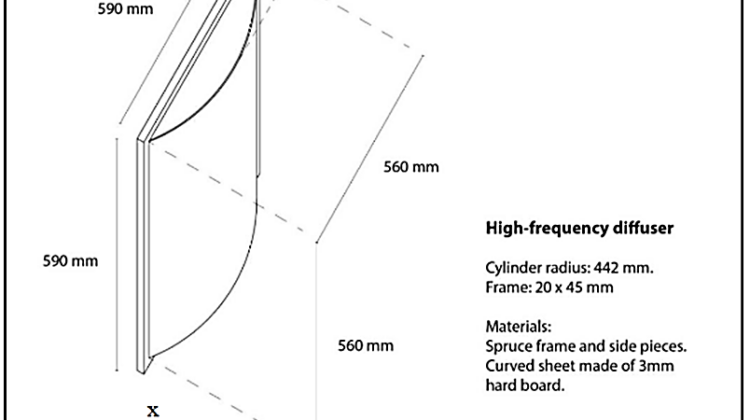
Half way through Internoise 2019 in Madrid one thing is clear: It is a buffet of knowledge! From sessions on ‘Architectural and building acoustics’ to ‘Environmental noise’ to ‘Noise and health’ (and everything in between). Internoise, Euronoise, ICA etc. are always the places to go if you need new inspiration and today especially three really inspirational presentations took place in the sessions ‘Soundscape, health, quality of life’ and ‘Acoustics in indoor spaces’.
Here are my top 3 presentations of 18th of June (day 2) – (in random order).
1. Biophilia and Acoustics: implications for Office Worker Health and Wellbeing.
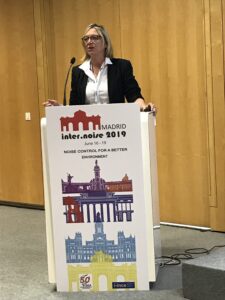
This interesting topic was presented by Paige Hodsman and just to make it clear: Biophilia and biophilic design is not only about having plants in the office – it is more complex than that! Paige explained how we don’t really have a lot of knowledge about the linkage between human sound perception and biophilic constructs – and she took the opportunity to touch upon how the hearing and sensory structures has developed over the years before she went into her literature review.
Also, she mentioned how The Leesman index is a big part of the project background. More than 500,000 global respondents (regarding workplace experience) identify ‘noise levels’ as a critical factor, especially for those doing individual focused work – and only 31% are satisfied with the noise levels in their workplace (Leesman 2018).
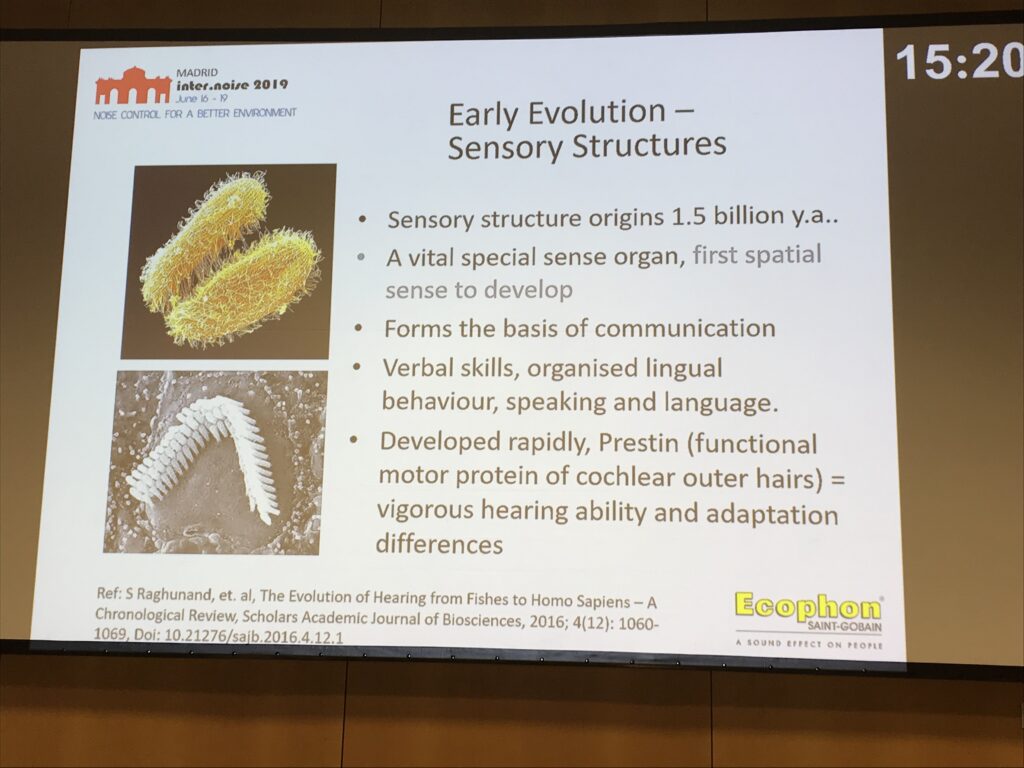
Influencers
Biophilia as such is not new and Paige ran through ‘early influencers’ such as Erik Fromm (1973) who among many things did research about how biophilia is central to humanitarian ethics. It wasn’t until 1984 that the term was popularized by Edward O. Wilson focusing on ‘life and life-like processes’.
 Working with room acoustics Paige has worked a lot with biophilia in regards to acoustics and she discussed the paradox of letting in the sounds of nature in buildings (water, birdsongs, etc.) without trying to make the indoor conditions mimic nature in regards to general conditions of the building/rooms.
Working with room acoustics Paige has worked a lot with biophilia in regards to acoustics and she discussed the paradox of letting in the sounds of nature in buildings (water, birdsongs, etc.) without trying to make the indoor conditions mimic nature in regards to general conditions of the building/rooms.
The fact that there are no sound reflections from above outside in nature (because of the sky that ‘absorbs’ every sound) should be ‘copied’ inside before we add anything ‘biophilic’. If we don’t do that we risk that the healing nature sounds will just be annoying background noise building up because of hard non-acoustic surfaces.
2. Good acoustics as an extra source of income in restaurants – a case study.

Finally! A presentation that gets to the point: It’s about money! Almost all people want a great sound environment – but when someone has to pay the struggle starts. Unless…
Juan Negreira presented his work about an intervention study in a really inspiring way – and kicked off his presentation by showing the audience how much money and time Spanish people actually spend in restaurants: in Spain there is 280,000 bars and restaurants and 6.5% of Spain’s GDP is due to restaurant business! Finally, the average Spaniard spends yearly 1900 Euros on restaurant visits. Considering this, restaurants are ‘big business’ also meaning that a lot of people work there and go there – and Juan mentions that 52% of restaurant guests in a published survey have left a restaurant because of noise.
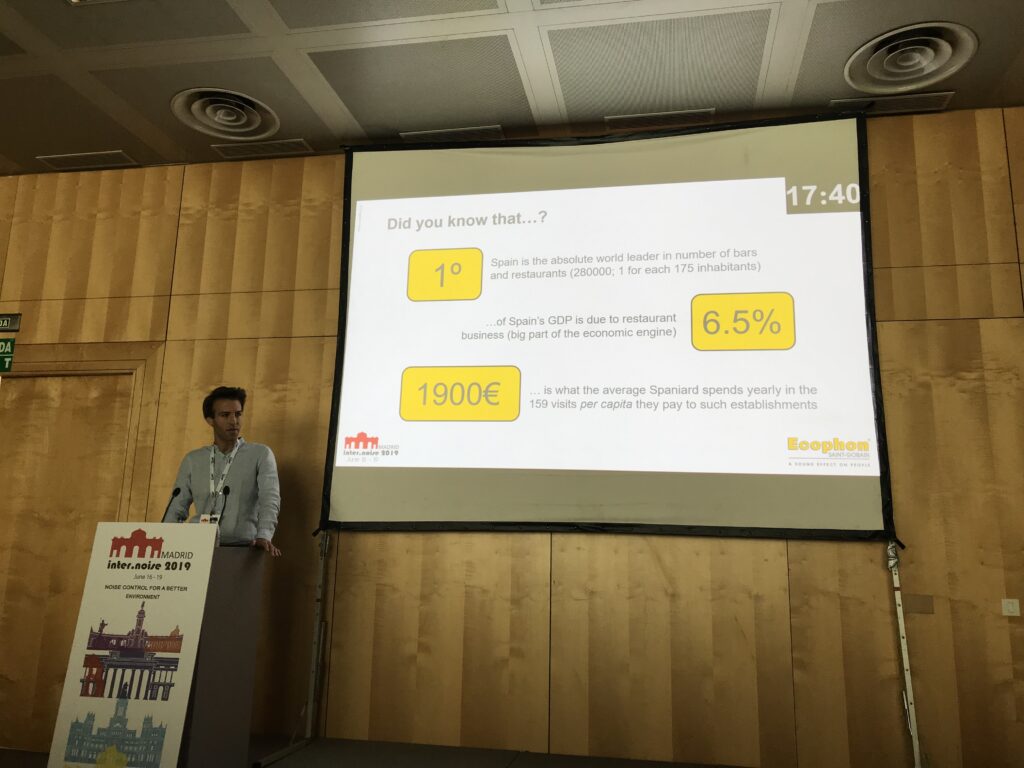
Restaurants are complex buildings/rooms – and to make a great restaurant you have to consider everything from hygiene demands to architecture and often room acoustics are forgotten in the design phase.
Reticular Activating System
When restaurants are designed without thinking of the acoustic quality of the rooms the reticular activating system (RAS) in the brain is challenged. RAS can be described as a ‘spam filter’ that filter away all the stimuli that you don’t need (e.g. if you have a discussion in a noisy bar – you filter away the background noise to keep concentration on the important signal – the conversation) – but when you are in a noisy restaurant your brain and hearing system will get tired and it gets more and more annoying to be in the surroundings.
The study
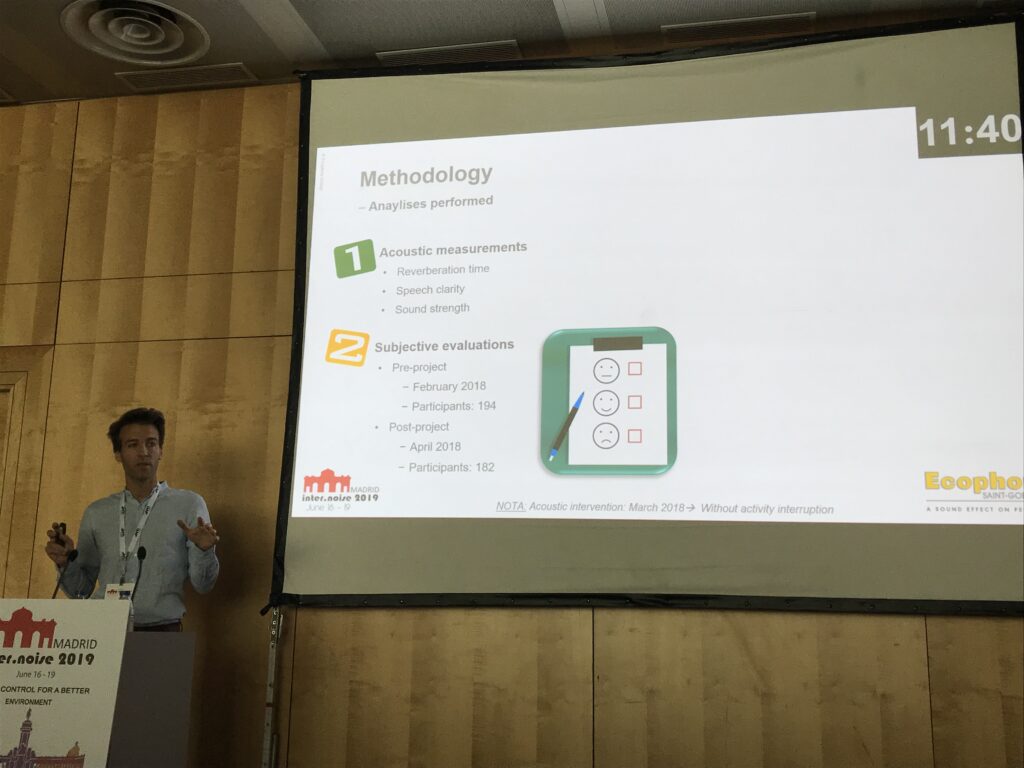
Juan runs through the design of the study which includes both acoustic measurements, subjective evaluations (questionnaires) and financial data analyses – before and after an acoustic intervention.
The results
The acoustic results were quite clear – several acoustic descriptors showed improved values, but what was even more striking was how this affected the LAeq: the average level went from 75.3 dB to 67.2 dB! The questionnaires showed that the customers rated the sound environment much better after the acoustic intervention and on-line ratings that are so important for restaurants today also got up! Finally, the financial data analysis revealed that there was 11% invoicing increase in 6 months! This means that the payback time for the acoustic treatment was just 4 months…
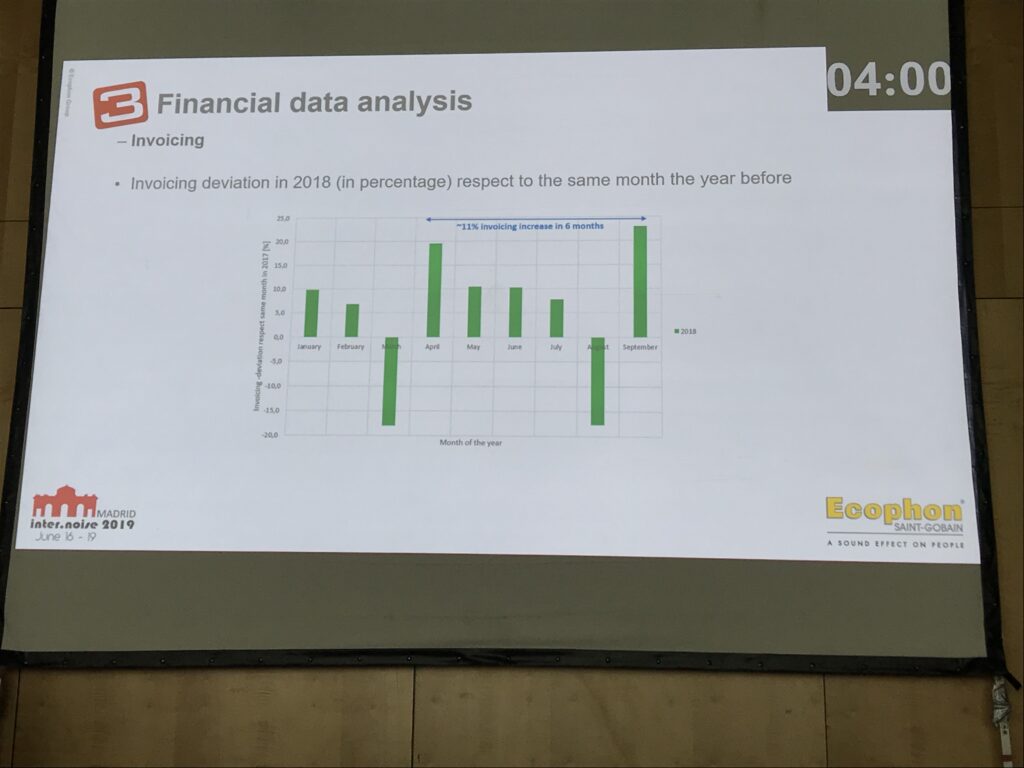
In the last minutes of the presentation Juan stressed the need for more acoustic descriptors than just reverberation time since we hear so much more. Reverberation time is a good start but we need to have a more holistic and complete vision in the future.
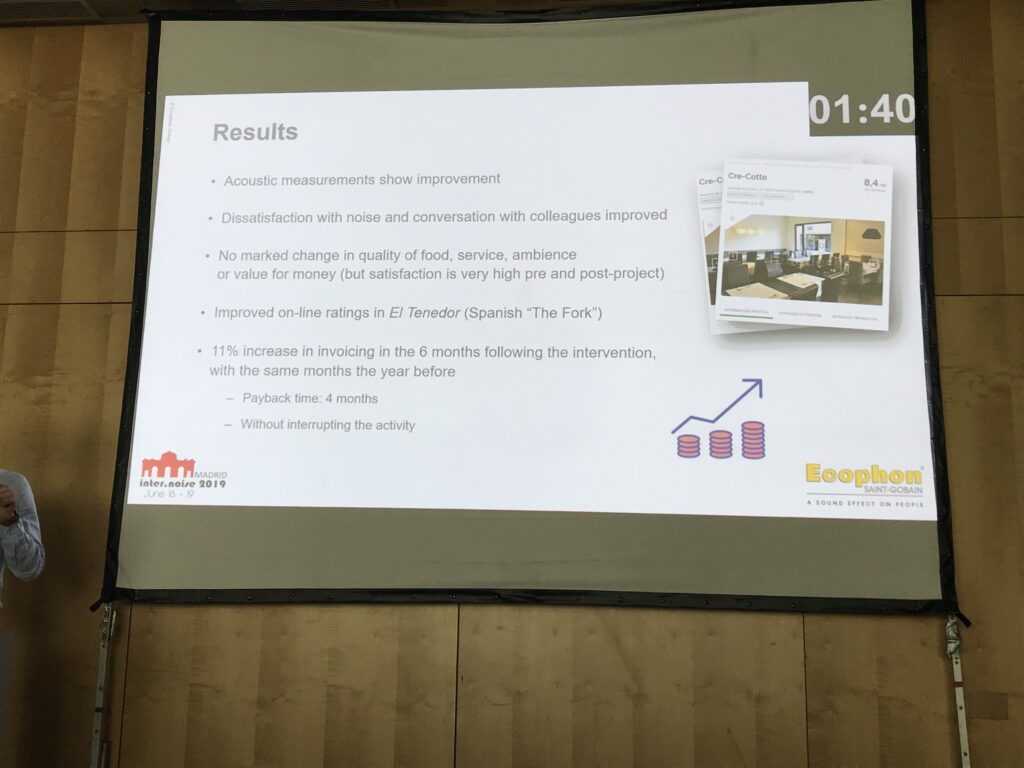
3. Diffusers in Public Ordinary Rooms
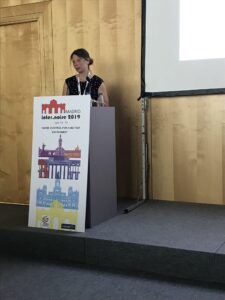
Emma Arvidsson presented a really interesting project she is working on together with Saint-Gobain Ecophon and Lund’s University. Knowing that Saint-Gobain Ecophon is a manufacturer of acoustic ceilings and walls, it might come as a surprise that Emma was discussing the role of diffusers. But they are on a mission. Since more and more schools, offices and healthcare facilities are prioritizing good room acoustics and therefor have acoustic treatment in the ceilings, we need to consider other things than just absorption when evaluating acoustic descriptors.
Reverberation time remains the preferred descriptor even though most public ordinary rooms cannot be described as a diffused sound field since most of the absorption material (if any) is on one surface; the ceiling. The diffuse field is only a theoretical condition almost impossible to obtain practically in reality and when we have absorption on one surface only the decay will not follow a straight line according to the theory but will be split in an early part correlating more or less to the theory and a late part with a longer reverberation time.
Emma also mentions how it is the grazing waves often determines the reverberation time, AND how scattering due to furniture MUST be considered. She also discusses the importance of early reflections in rooms for communication and how sound strength also plays a role in rooms for speech.
The study
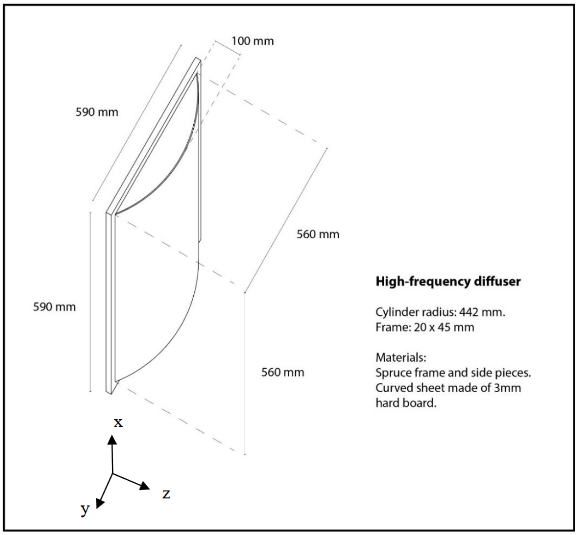
Diffusers were tested in a reverberation chamber with a sound absorbing ceiling (αw = 1) and the diffusers were tested in vertical rows in different directions. The configurations varied from three rows up to twelve rows.
A significant improvement in reverberation time was seen by using the diffusers and Emma mentioned that the vertically oriented diffusers gave significantly higher improvement than the horizontally oriented diffusers. Also the results showed that there was a threshold for numbers of diffusers.
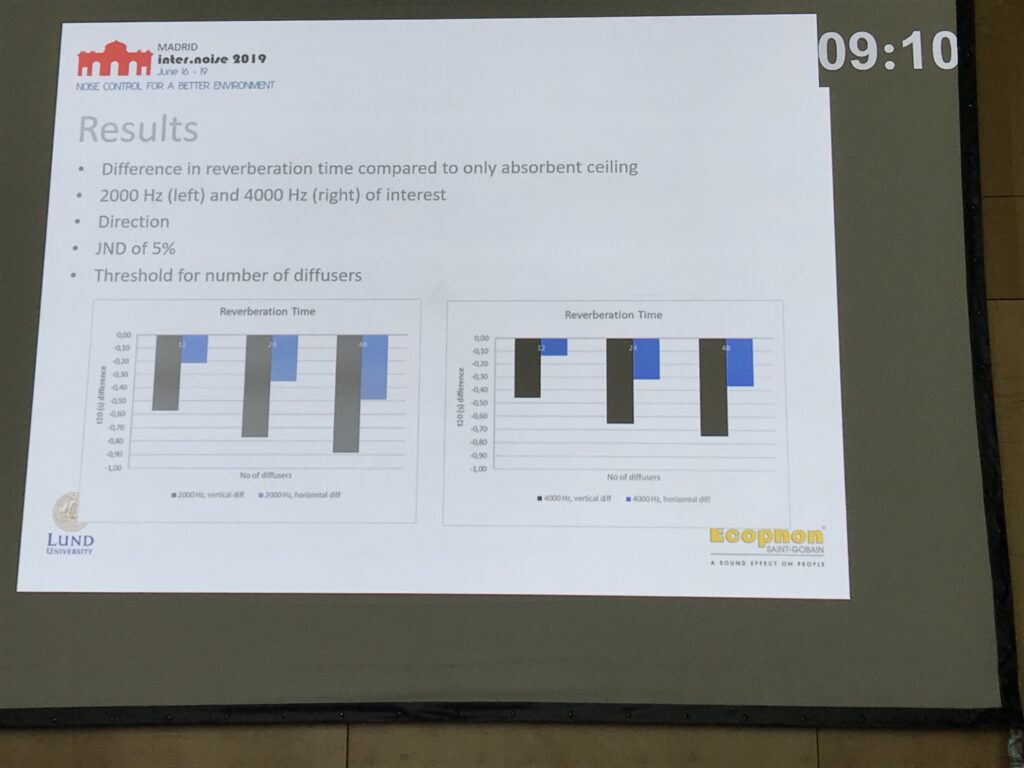
Internoise 2019 continues in lovely Madrid – and we are ready for more inspiration! Maybe also at Internoise in Seoul 2020?? Will you be there?

